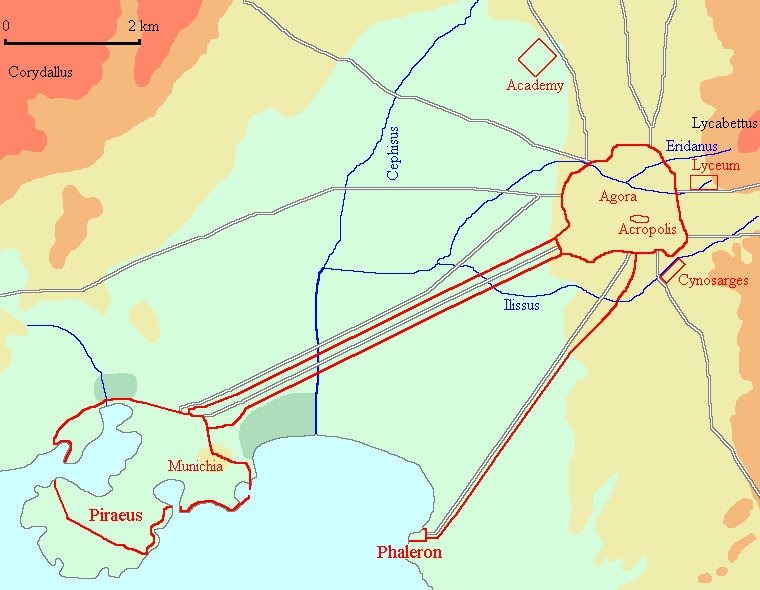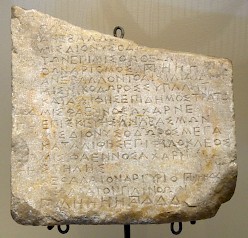Athens, Long Walls
Q1163616Long walls: name of Greek fortifications that connected a city with another site, for example a citadel or a port. The best known example is the Athenian wall to Piraeus.

The Athenian "Long Walls" were built after Xerxes' invasion of Greece (480-479); their construction was proposed by Themistocles, but the actual building started in 461, when Athens was at war with Sparta (the First Peloponnesian War). The proposal to execute the old plan was made by Cimon.
The western wall connected the southwest of Athens to its port Piraeus and was about six kilometer long; the eastern wall continued from the south of the city to another port, Phaleron, which was about 5½ kilometer away. Between the two walls, a large triangle of land could be used for agriculture. The walls were finished in 457, although Pericles would later take the initiative for doubling the western wall (445-443).
Some traces of the ancient walls are still visible and archaeologists have established that they were built on foundations of limestone blocks and poros. The upper walls were made from sun-dried bricks. There were towers at regular intervals.
The Long Walls enabled Athens to survive any siege. As long as it was connected to its ports and controlled the sea, no enemy could capture the city. During the Peloponnesian War (431-404), the Athenians simply evacuated the countryside, left it to the Spartans, and lived in Athens itself, which could receive supplies from across the sea. According to Aristophanes,note the statesman Cleon strengthened the walls by building a diateichisma, "cross-wall", but it is unclear what this can have been.
However, when the Athenian fleet was defeated at the Aigospotamoi (405), the food supply was imperiled, and Athens had to surrender. One of the main demands of the Spartans was the destruction of the hated Long Walls. According to Xenophon, the enemies of Athens "tore them down among scenes of great joy and to the music of flute girls".note

Ten years later, the Athenians had recovered, and at the beginning of the Corinthian War (395-386), in which they took up arms against the Spartans again, their general Conon rebuilt the Long Walls.
The Long Walls were still standing at the beginning of the first century BCE. During the First Mithridatic War, in 86 to be precise, Athens was besieged by the Roman general Sulla. After he had destroyed the Long Walls, probably with catapults, he was able to isolate Athens from Piraeus. In the end, Athens and it port had to surrender.